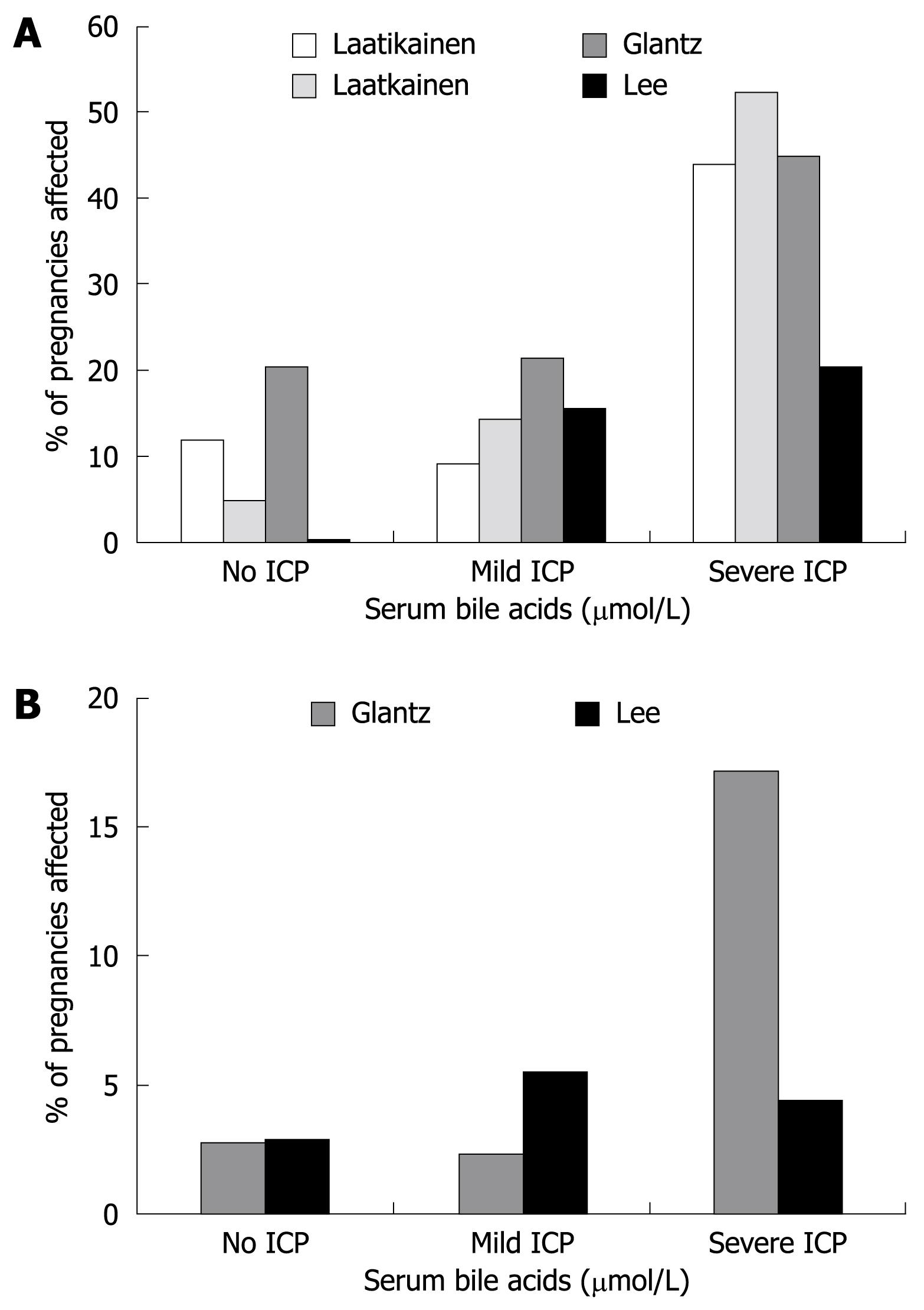Copyright
©2009 The WJG Press and Baishideng.
World J Gastroenterol. May 7, 2009; 15(17): 2049-2066
Published online May 7, 2009. doi: 10.3748/wjg.15.2049
Published online May 7, 2009. doi: 10.3748/wjg.15.2049
Figure 1 Graphs showing the incidence of meconium staining of the amniotic fluid (A) and preterm labour (B) in studies of the relationship between the maternal serum bile acid level and adverse fetal outcomes[2547–49].
The total maternal serum bile acid level was used in all studies except Laatikainen et al[47] (represented by the white bar), where cholic acid only was used (normal range < 5 &mgr;mol/L). Serum bile acid level has been categorized as no ICP (< 10 &mgr;mol/L), mild ICP (10-40 &mgr;mol/L) or severe ICP (> 40 &mgr;mol/L) by the authors. One study[25] used fasting maternal bile acids and compared fetal outcomes with the single highest bile acid reading available. The other studies did not specify whether the mothers were fasted. One study[48] compared fetal outcomes to the serum bile acid level from the week before delivery, and the other studies did not specify which serum bile acid level was used.
- Citation: Geenes V, Williamson C. Intrahepatic cholestasis of pregnancy. World J Gastroenterol 2009; 15(17): 2049-2066
- URL: https://www.wjgnet.com/1007-9327/full/v15/i17/2049.htm
- DOI: https://dx.doi.org/10.3748/wjg.15.2049









